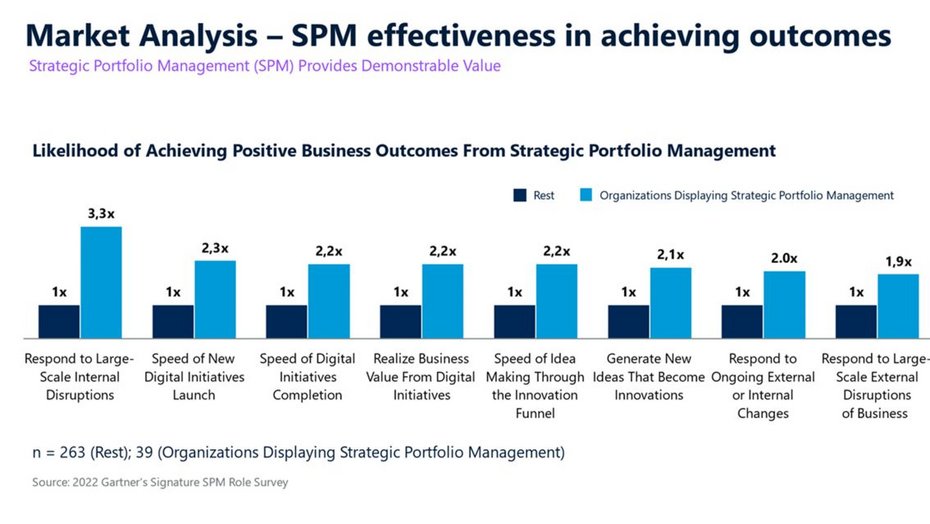For businesses across the globe, this decade has brought disruption at a magnitude not seen since the mid 20th century. Nearly five years since the start of a pandemic that created a new workforce paradigm, riled global supply chains, and promoted IT investment at manic pace, management is finally coming up for air—only to be hit with new sources of pressure. Consumers are not only expecting superior products and exceptional services; they are demanding sustainability, personalization and innovation. On top of that, they are attuned to the possibilities of artificial intelligence (AI). Enterprises are just beginning to navigate how AI—perhaps the greatest disrupter of all—can change the products and services they offer. These new expectations and pressures on CIOs require bold strategies to maintain a competitive edge.
This rapid pace of change comes with opportunities and risks. Today’s businesses are competing in a “winner takes all” marketplace, where brand-building is essential and first-mover advantage ups the rewards for those who can innovate quickly. Yet the costs of getting it wrong are as high as ever. The pace at which new technologies are arriving on the scene, and the ability to gather massive amounts of personal data, are creating new openings for cyberattackers. These security threats, along with growing regulatory scrutiny, make operational resilience more critical than ever. All this is pushing companies into reaction mode, with many acting hastily on tactics instead of through well-thought-out strategies. Companies that innovate without a vetted strategy risk investing in products that fail to deliver value and overload their IT with technical debt. Others may develop strategies that look good on paper but fall flat in their execution. According to Forbes, 60% to 90% of business strategies fail before they even launch.
IT is the business
In a digital-first world, the ability to execute on your business strategy is deeply intertwined with your IT. The name of the game these days is agility: In recent years, new Agile software development methodologies have improved workflows and shortened product release cycles to enable IT to keep pace with individual demands of business. Yet, in many large organizations, framing agile development within the wider business strategy remains a challenge.
Too often, management struggles to:
- Translate high level vision into actionable IT projects.
- Clearly scope IT investments to ensure maximum value.
- Roadmap and govern the way forward in transforming business and IT.
It is often organizational hurdles, not technical barriers, that derail even the best thought out strategic plans. A 2023 study by KPMG found that a lack of technology “governance and coordination” was the biggest reason firms were slowing down their transformation projects; 47% of companies surveyed cited this challenge. More often than not, their individual technologies weren’t failing them, but their management of IT was.
If these challenges resonate with you, it might be time to embrace Strategic Portfolio Management (SPM). An SPM solution, which aligns IT resources with business goals, operates like a GPS for your organization’s strategy. It not only identifies the best route to your destination. It also shows you the resources you’ll need to get there, points out the obstacles you may face, and monitors your progress. SPM equips your organization with the tools necessary to:
- Align business and IT strategies to ensure consistent direction.
- Plan IT investments to drive business growth and minimize wasted resources.
- Optimize your IT portfolio for efficiency and cost-effectiveness.
- Manage project portfolios to deliver on time and within budget.
- Mitigate risks by integrating financial, operational and technological considerations.
These capabilities are essential for integrating business and technology planning, aligning strategy and execution, and realigning budgets, resources and roadmaps as the strategy changes. The best-performing SPM tools are built on a strong Enterprise Architecture (EA) foundation, which gives them real-time transparency into the IT landscape, helps reduce IT complexity, and allows management to tackle the technical debt that far too often slows the pace of change by bogging down the IT environment.
SPM tools are fast gaining momentum, and are helping organizations adjust budgets, resources and roadmaps while planning their digital transformation from strategy to execution. Could SPM drive strategic planning and implementation in your enterprise? This paper is designed to help you learn more about how SPM can help you manage IT change in a way that will dramatically improve your chances of success in executing any business strategy.
Why the best plans often fail to deliver
Winston Churchill, Britain’s acclaimed Prime Minister, is often credited with saying, “However beautiful the strategy, you should occasionally look at the results.” It’s a wry remark highlighting general complacency when it comes to monitoring strategic success. But in today’s hyper-competitive economy, a strategy-to-execution disconnect can be the difference between winning and losing: Imagine a bank that migrates its consumer data to a suite of modern cloud-based applications, only to be hit with outages because its legacy systems aren’t compatible with these changes. Or a manufacturer that’s using real-time analytics to make processes more efficient—but management hasn’t stopped to fully consider how these changes will impact supplier relationships, inventories, energy use, product marketing and other aspects of the day-to-day business.
However beautiful the strategy, you should occasionally look at the results.
This IT-business disconnect is frequently rooted in a lack of tools to facilitate project transparency and governance. To succeed, digital business managers responsible for strategy formation must ensure IT investments are based on clear financial and risk data. Effective collaboration among business analysts, project managers and enterprise architects is critical throughout the IT planning and roadmapping process. The strategy realization office, tasked with overseeing project execution, needs ways to monitor and assess how this high-level vision translates into action. It must also provide feedback between the state of business thinking and state of program delivery that enables the enterprise to continuously adapt to the changing business environment, and ultimately achieve its strategic goals.
Achieving this is no easy task—especially without the proper tools to manage IT change. Despite market uncertainties, many IT leaders still:
- Prioritize IT for business areas with the loudest voice or deepest pockets, not on strategic importance.
- Use outdated project management methodologies focused on resource allocation rather than outcomes, limiting their ability to adapt quickly.
- Rely on tools designed for other purposes—including spreadsheets that lack KPI-based analytics, CMDB’s that lack big-picture context, and modeling solutions that consist of quickly outdated data.
- View Agile development as a methodology done in a few pockets of the organization, rather than something that must be centrally governed and in-sync with the wider goals of business.
These misguided approaches may seem harmless at first, but they significantly increase the likelihood of project failure. When IT and business are misaligned, organizations risk pouring money into big investments, including new processes and products, that fail to deliver value. This can result in lost market share, stunted innovation, and even reputational damage. Poor IT management also heightens the risk of regulatory non-compliance, and even system failures.

Overcoming strategy execution challenges: The strategic portfolio management approach
Strategic portfolio management, once a niche approach to IT and business planning, is fast becoming mainstream in the face of these strategy execution challenges. Gartner forecasts that "By 2026, 30% of organizations will embrace effective strategic portfolio management (SPM), and invest in talent and enabling technology to become industry leaders." (Gartner®, Magic Quadrant™ for Strategic Portfolio Management, John Spaeth, Shailesh Muvera, et.al., 28 May 2024). The discipline’s portfolio-based approach, which captures interdependencies between enterprise-wide applications, technologies and strategies, is uniquely adept at bringing transparency to the role of IT, and IT change, in supporting business outcomes. For SPM’s early adopters, the benefits are clear: A 2022 Gartner survey found that organizations employing SPM are 2.2 times more likely to realize business value from digital initiatives, 2.3 times more likely to launch these initiatives faster, and 3.3 times more likely to respond positively to large-scale internal disruptions.
The SPM platform, done right
Harnessed correctly, SPM can be a game-changer for companies seeking to master strategic planning and implementation. Yet not all SPM tools are created equal. Many IT service or asset management products claim to offer SPM-like capabilities, but they often lack the architectural depth and governance, financial optimization, and strategic alignment features needed to truly drive business value. Beware of solutions that appear to be cost-effective but fall short in these critical areas.
Even among dedicated SPM tools, the capabilities and supported use cases vary. Some, for example, may be strong in IT portfolio analysis—designed to assess, prioritize and optimize IT resources to align with strategic goals—but may be less adept at managing strategy-to-execution. Critically, not all SPM products are built on a robust system of EA management. SPM works best when its portfolios are based on the interdependencies identified by EA, which allows companies to more boldly pursue business opportunities, boost operational resilience, and better overcome strategy execution challenges.
Whatever your intended use case, there are a few broad capabilities you’ll want to ensure your platform can deliver:
- Governance: SPM helps enterprises implement policies, guidelines, standards and controls for IT change. This governance includes defining processes, roles and responsibilities for making decisions on IT investments and other aspects of digital transformation.
- Strategic alignment: SPM is all about alignment: of IT services with the business demands they support; of plans for IT change with business strategy; and of resources with the portfolio of projects and digital product and service development. The right platform will offer a variety of strategic alignment capabilities designed to transform the wider business vision into reliable and resilient operations.
- Financial optimization: Money matters—especially when it comes to investments that will stretch into the years, if not decades. SPM financial optimization capabilities offer methodologies for inventorying and analyzing current and planned IT acquisitions, to make sure they’re serving a business purpose and are likely to create the most value.
Strategic portfolio management in action: Why Alfabet is the ideal choice
Enterprises looking for a comprehensive SPM tool that’s trusted across industries should look no further than Alfabet. Alfabet’s comprehensive SPM platform is especially strong in aligning digital transformation projects with strategic business objectives—and its robust EA foundation, unique among its competitors, ensures its portfolio-based approach is grounded in a comprehensive and integrated view of your baseline IT. For enterprises looking to start small, Alfabet offers an entry-level Alfabet edition that can easily scale in a way that offers maximum flexibility for both business needs and budgets. These factors are reasons why Alfabet is routinely cited as “Leader” in leading analyst reports.
What does this look like in action? The experience of a few of our customers shows how SPM, and Alfabet, are ideally positioned to support strategic planning and implementation.
- Strategic boldness: A major publisher was modernizing its IT and needed a way to ensure its infrastructure changes would not cause any technical glitches and were compliant with its goals as a business. Alfabet gave its leaders the transparency to make faster, more-informed decisions, and enabled them to boldly pursue projects that would have been considered too risky in the past.
- Strategic tenacity: A European railway operator was looking for a tool to help make sure its IT projects were within budget and wouldn’t lead to service disruptions. Alfabet boosted its contingency planning by connecting all its processes and applications. As one IT executive put it, the firm now has “very few surprises or cost overruns.”
- Alignment: After years of carrying out projects on an ad hoc basis, a large bank was searching for a better way of aligning IT with the priorities of management. With Alfabet, they assigned scores for “strategic relevance” to every asset, process and existing or potential project, and linked them all to 13 organizational priorities. This process helped the bank overcome internal resistance to new banking channels that have since driven new streams of revenue and won acclaim from its customers.
Ready to transform your IT strategy with a proven SPM platform? Explore our demo hub or contact us today to request a free trial and explore how Alfabet can help align your IT with your business goals. Let’s drive your business forward together.



